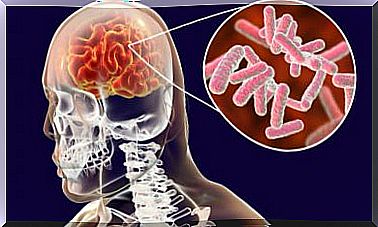Galantamine For Alzheimer’s Disease: How Does It Work?

The pharmaceutical industry has been trying for decades to find a drug capable of stopping the degeneration of nerve cells in the brain in Alzheimer’s patients. In this desperate crusade, we now have formulas that, without reaching that goal, at least try to improve general and cognitive symptoms. Galantamine is one such example.
Just a year ago the American Drug Agency, the FDA, gave us some hope with aducanumab . It is neither more nor less than a monoclonal antibody capable of eliminating the beta-amyloid protein and delaying cognitive decline in patients who are in the first phase of the disease.
However, with the arrival of the pandemic, the approval of this and other drugs is being delayed and left in the background. This means that today we continue to fight, treat and care for Alzheimer’s patients with the same strategies as always: social, cognitive and pharmacological intervention.
Galantamine is part of that comprehensive basic care plan for Alzheimer’s and other dementias. We review this drug below.

Galantamine: what it is, how it works, administration and what side effects does it present
Galantamine is next to the d
If we stop at the first drug, galantamine, it is important to note that we are facing one of the most interesting pharmacological resources for several reasons. For starters, it is a nootropic alkaloid and what it does is inhibit the reuptake of acetylcholine. Something key in Alzheimer’s dementia as we will now see.
Second, it is relevant to know that the galantamine component is present in plants such as Galanthus nivalis (snowdrops) and that in the Soviet Union era it was used to treat amnesia. Currently, it is one of the most common drugs to treat dementias and cognitive degeneration.
How does it work?
To understand how galantamine works, we must first start by understanding what happens in the brains of people with Alzheimer’s. One of the main problems lies in the gradual decrease in acetylcholine levels. Acetylcholine is an essential neurotransmitter in cognitive processes, such as memory, attention, and learning.
What happens with this neurodegenerative disease is that beta-amyloid plaques and neurofibrillary tangles form, preventing cholinergic synapses. Added to this is the appearance of another element: cholinesterase, an enzyme that breaks down the remaining acetylcholine in synapses. Hence the progressive decline and dementia.
What galantamine basically does is slow the reuptake of acetylcholine. In addition, it stops the action of cholinestarase to achieve a higher level of acetylcholine and keep neurons connecting with each other.
It should be noted once again, that this drug does not stop the progressive deterioration of the disease. It is obvious. What it will do is slow down that process and improve, minimally, the person’s cognitive processes. This drug along with stimulation therapies are always the best starting point.
How is it administered?
Galantamine is usually given alongside d
It is also administered to both patients in the early stages and those with a more advanced stage of the disease.

What are the side effects?
With gelantamine, it happens as in many of the drugs administered to elderly patients: we do not know how each person will respond. Therefore, it is important to start treatment and observe possible adverse symptoms. However, and on average, it does not usually show excessive problems.
Thus, research works such as those carried out at the University of São Paulo, in Brazil, indicate that the following effects may appear:
- Weightloss.
- Skin rash
- Possible appearance of vomiting.
- Bradycardia (the heart beats lower than normal).
- It cannot be administered to patients with intestinal obstruction problems or severe respiratory diseases.
Finally, it can only be added that family members point out that changes are often perceived quickly: the person regains some autonomy, the ability to concentrate, solve problems, communicate … Others, on the other hand, need a little more time.
While gelantamine does not resolve the disease or slow down cognitive decline, it stands out as a small help in our day-to-day lives.









